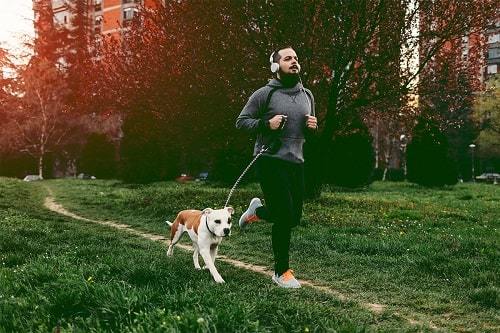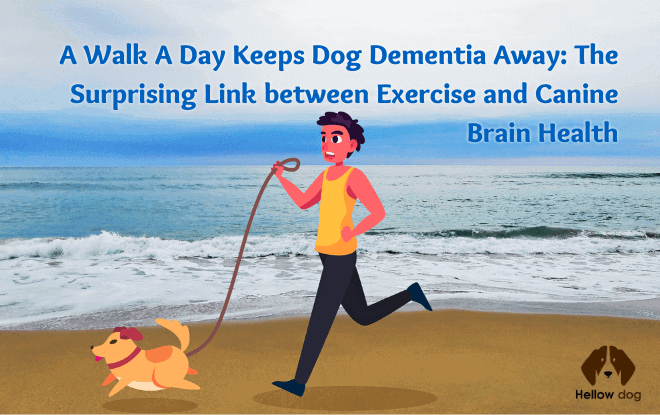As pet owners, we all want our furry friends to live happy and healthy lives. While we may know the importance of physical exercise for our dogs’ physical health, a growing body of research suggests that exercise can also play a key role in their brain health. In this article, we’ll explore the surprising link between exercise and canine brain health and what you can do to keep your dog’s brain in top shape.

The Benefits of Exercise for Canine Brain Health
Improved Cognitive Function
Studies have found that regular exercise can lead to improved cognitive function in dogs. This includes better memory, learning ability, and problem-solving skills.
Reduced Risk of Canine Dementia
Just like humans, dogs can develop dementia as they age. However, research has shown that regular exercise can help reduce the risk of cognitive decline and dementia in dogs.
Decreased Anxiety and Depression
Exercise has also been shown to have a positive impact on dogs’ emotional well-being. Regular exercise can help reduce anxiety and depression in dogs, leading to a happier and healthier pup.
How Much Exercise Does Your Dog Need?
Consider Your Dog’s Age and Breed
The amount of exercise your dog needs will depend on factors such as age, breed, and overall health. Younger and more active dogs will generally require more exercise than older or less active dogs.
Aim for at Least 30 Minutes of Exercise per Day
As a general rule, aim to provide your dog with at least 30 minutes of exercise per day. This can include walks, runs, playtime, or other physical activities.
Mix up Your Dog’s Exercise Routine
To keep your dog engaged and motivated, try mixing up their exercise routine. This can include trying new activities, going to new locations, or adding new toys or games.

Other Ways to Promote Canine Brain Health
Provide Mental Stimulation
In addition to physical exercise, providing your dog with mental stimulation can also help promote brain health. This can include puzzle toys, training exercises, and interactive play.
Feed Your Dog a Healthy Diet
A healthy diet is also important for your dog’s brain health. Be sure to feed your dog a balanced and nutritious diet that includes healthy fats, antioxidants, and other brain-boosting nutrients.
Regular Veterinary Check-Ups
Regular veterinary check-ups can also help ensure your dog’s brain health. Your veterinarian can check for any underlying health conditions that may impact your dog’s brain health and recommend appropriate treatment or management strategies.
Conclusion
Regular exercise is not only important for our dogs’ physical health but also for their brain health. By providing our dogs with regular exercise and mental stimulation, feeding them a healthy diet, and scheduling regular veterinary check-ups, we can help ensure their brain health and overall well-being.
FAQs
1. Can older dogs still benefit from exercise for brain health?
Yes, even older dogs can benefit from regular exercise for brain health. However, the amount and intensity of exercise may need to be adjusted based on the dog’s age and overall health.
2. What are some examples of mental stimulation for dogs?
Examples of mental stimulation for dogs include puzzle toys, training exercises, and interactive play.
3. Can a poor diet negatively impact my dog’s brain health?
Yes, a poor diet can negatively impact your dog’s brain health. It’s important to feed your dog a balanced and nutritious diet that includes brain-boosting nutrients.
4. How often should I take my dog to the veterinarian for check-ups?
It’s recommended to take your dog to the veterinarian at least once a year for a check-up. However, the frequency may need to be increased for senior dogs or dogs with underlying health conditions.
5. What are some signs of cognitive decline in dogs?
Signs of cognitive decline in dogs may include disorientation, changes in sleeping patterns, decreased interest in toys or activities, and changes in personality or behavior. If you notice any of these signs in your dog, it’s important to consult with your veterinarian.







